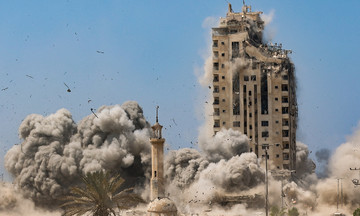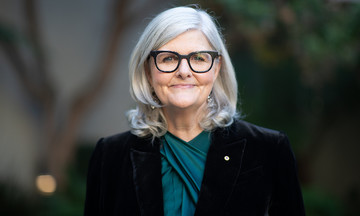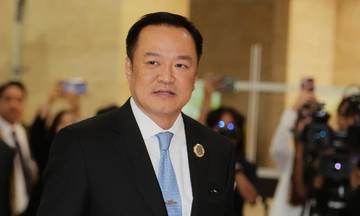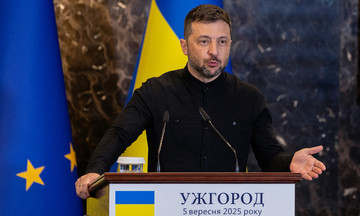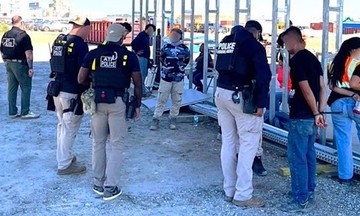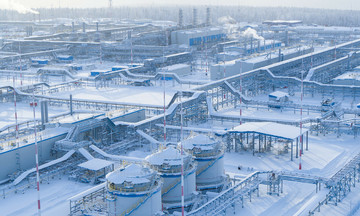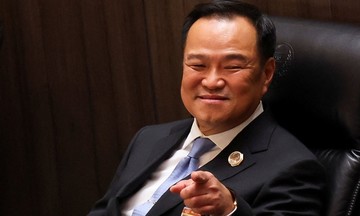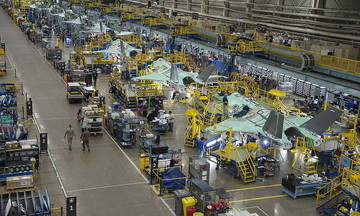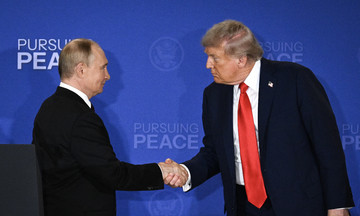On 3/9, former US President Donald Trump reacted angrily to a Polish reporter's suggestion that he hadn't done enough to pressure Russian President Vladimir Putin into ending the conflict in Ukraine. Trump immediately listed the measures he had taken against Russia and threatened consequences if Moscow refused to negotiate peace.
"Whatever his decision, we will be satisfied or not. And if we are not satisfied, you will see a lot of things happen," Trump said, without elaborating.
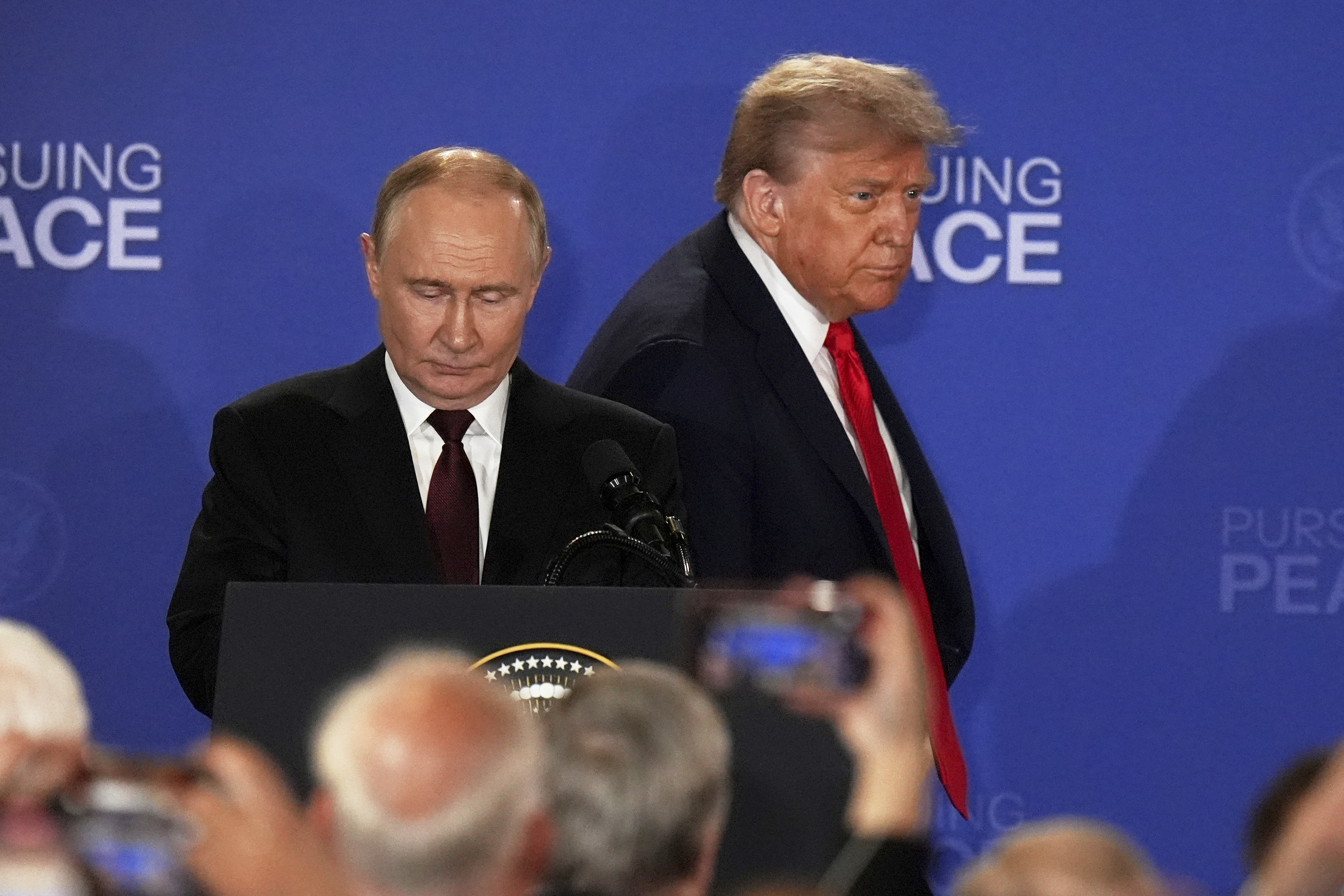 |
US President Trump and Russian President Putin at a press conference in Alaska in August. Photo: AP |
US President Trump and Russian President Putin at a press conference in Alaska in August. Photo: AP
During his campaign, Trump claimed he would resolve the Russia-Ukraine conflict within 24 hours of taking office. However, his efforts and those of his team after returning to the White House haven't ended the war.
Despite phone calls and a face-to-face meeting between Trump and Putin, as well as with Ukrainian President Volodymyr Zelensky, a ceasefire between Moscow and Kyiv remains elusive due to disagreements over territorial concessions. Trump's attempts to facilitate a direct meeting between Putin and Zelensky have also been unsuccessful.
Ukraine accuses Russia of avoiding a summit to prolong the conflict. During his visit to China on 3/9, Putin said he wasn't opposed to a meeting but doubted its effectiveness. He suggested Zelensky come to Moscow, a proposal Ukrainian Foreign Minister Andrii Sybiha vehemently rejected.
When asked if he had a message for the Russian leader, Trump said on 3/9, "I don't have any message. He knows my position, and he will make a decision one way or another." The former president believes he has done a great deal to resolve the conflict.
He cited the 50% tariffs imposed on India for purchasing Russian oil as an example of indirect US pressure on Russia. Washington initially imposed a 25% tariff on goods from India, the world's fifth-largest economy and a Russian ally, in July. However, the US doubled the tariff as a sanction for New Delhi's continued trade with Moscow.
The 50% tariff, effective from 28/8, has significantly impacted India. Experts believe it will substantially reduce exports to the US, India's largest trading partner, potentially affecting thousands of jobs and costing the Indian economy billions of USD.
India's main exports to the US include pharmaceuticals, gems, carpets, textiles, and jewelry. The tariff imposed by Washington is among the highest Trump has levied.
India hasn't retaliated against Trump's move. However, it has expressed displeasure by strengthening ties with Moscow and Beijing, considered US rivals. Indian Prime Minister Narendra Modi visited China this week and was seen traveling with President Putin there.
Trump stated on 3/9 that he wasn't concerned about a Russia-China alliance against the US, but expressed disappointment with Putin, adding that the US wants to "help everyone live" in Ukraine.
The former president hinted at further "secondary sanctions" against other Russian allies, similar to those imposed on India. "You will see more. This is just an example," he said at the Oval Office on 8/8.
Experts believe China could be the next target. The US and China recently experienced a tense trade confrontation, with both sides imposing tariffs exceeding 100% on each other's goods. Following negotiations, the US currently imposes a 57.6% tariff on Chinese imports, while the average Chinese tariff on US goods is 32.6%.
Trump also threatened further sanctions against Russia if Putin didn't agree to end the war in Ukraine. He reiterated this threat on 22/8, a week after hosting his Russian counterpart in Alaska.
"I will make a decision on what we will do. It will be a very important decision. Will it be big sanctions or big tariffs, or both, or will we do nothing and just say, 'it's your war'?" he said.
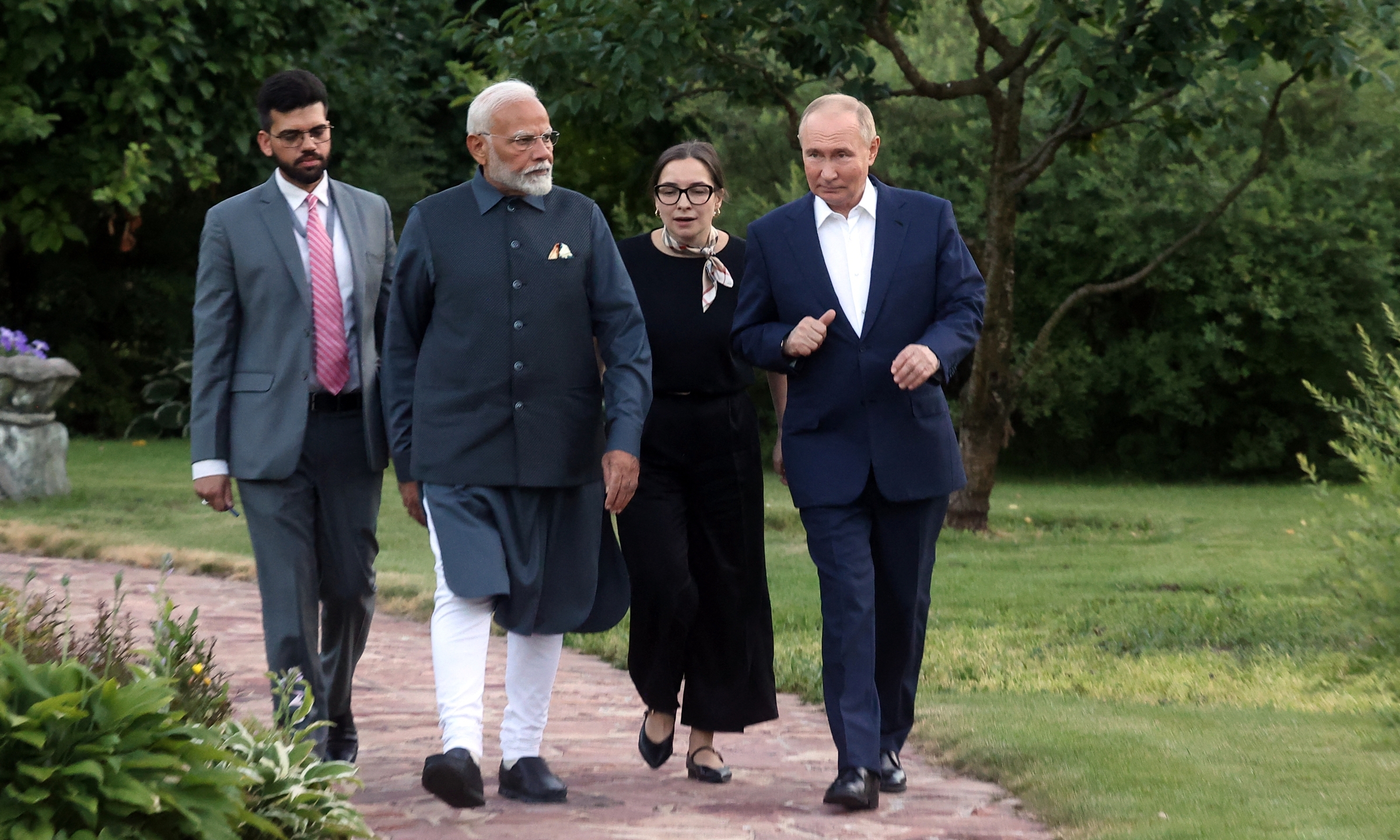 |
Russian President Putin (far right) and Indian Prime Minister Modi (third from right) stroll at the Novo-Ogaryovo residence outside Moscow, on 8/7. Photo: AFP |
Russian President Putin (far right) and Indian Prime Minister Modi (third from right) stroll at the Novo-Ogaryovo residence outside Moscow, on 8/7. Photo: AFP
Since Trump left office in January 2021, his administration hasn’t imposed further sanctions on Russia. However, Washington has long had extensive restrictive measures against Moscow.
Several travel and business bans on Russian individuals, officials, and entities have been in place since 2014, following Russia's annexation of Crimea. The Main Intelligence Directorate (GRU), the Federal Security Service (FSB), four individuals, and three companies were sanctioned for alleged interference in the 2016 US elections.
After the Ukraine conflict erupted in February 2022, the Biden administration intensified sanctions, including bans on Russian oil purchases and transactions with Russian banks, as well as freezing Moscow's assets abroad. They also restricted high-tech exports to Russia, limiting its access to Western technology.
In July, Trump secured an arms deal with NATO members in Europe. He said the weapons would be quickly sent to the Ukrainian front lines and European allies would pay the US.
On 28/8, the US State Department confirmed an $825 million arms package for Ukraine as part of the deal. Ukraine reportedly requested 3,500 long-range cruise missiles and 3,350 GPS systems.
"The agreement will improve Ukraine's military capabilities to counter current and future threats by providing them with additional equipment," the US statement said.
Despite this pressure, Russia shows no sign of yielding. Putin suggested on 3/9 that America's "sincere" efforts to find a solution were a "light at the end of the tunnel," but the outcome depends on the evolving situation.
"If no solution is reached, we will be forced to complete our set tasks with military force," Putin emphasized.
Thuy Lam (Al Jazeera, AFP, Reuters)



